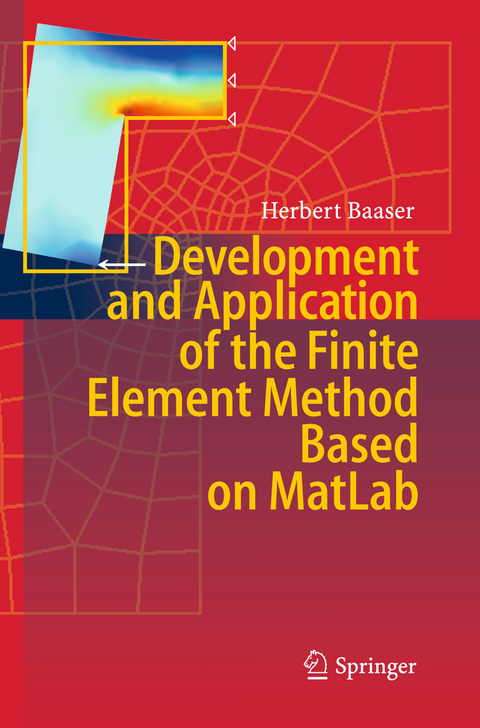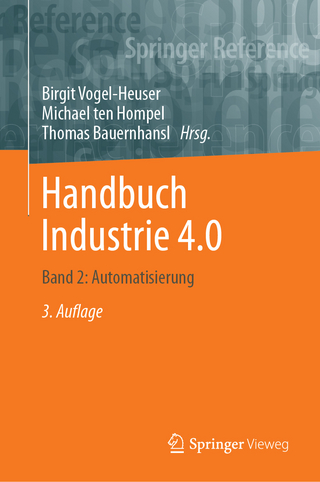
Development and Application of the Finite Element Method based on MatLab
Seiten
2014
Springer Berlin (Verlag)
978-3-642-42590-5 (ISBN)
Springer Berlin (Verlag)
978-3-642-42590-5 (ISBN)
Providing a concise introduction to the Finite Element Method (FEM), this volume presents an overview of the leading method in computer-oriented mechanics. Readers will learn how to implement equations of continuum mechanics into FEM, as well as how to program their own models of materials.
The intention of this booklet is a brief but general introduction into the treatment of the Finite Element Method (FEM). The FEM has become the leading method in computer-oriented mechanics, so that many scienti?c brancheshavegrownup besides overthelastdecades. Nevertheless,theFEM today is a question of economy. On the one hand its industrial application is forced to reduce product development costs and time, on the other hand a large number of commercial FEM codes and a still growing number of software for e?ective pre- and postprocessors are available in the meantime. Due to that, today it is a quite challenging task to operate with all these di?erent tools at the same time and to understand all handling and so- tion techniques developed over the last years. So, we want to help in getting a deeper insight into the main "interfaces" between the "customers of the FEM" and the codes itself by providing a totally open structured FE-code based on Matlab, which is a very powerful tool in operating with matrix based formulations. That idea and conditions forced us some years ago to initiateDAEdalon as a tool for general FE developments in research appli- tions. In spite of still existing high sophisticated - mostly commercial - FE codes, the success and the acceptance of such a structured tool justify that decision afterwards more and more.
The intention of this booklet is a brief but general introduction into the treatment of the Finite Element Method (FEM). The FEM has become the leading method in computer-oriented mechanics, so that many scienti?c brancheshavegrownup besides overthelastdecades. Nevertheless,theFEM today is a question of economy. On the one hand its industrial application is forced to reduce product development costs and time, on the other hand a large number of commercial FEM codes and a still growing number of software for e?ective pre- and postprocessors are available in the meantime. Due to that, today it is a quite challenging task to operate with all these di?erent tools at the same time and to understand all handling and so- tion techniques developed over the last years. So, we want to help in getting a deeper insight into the main "interfaces" between the "customers of the FEM" and the codes itself by providing a totally open structured FE-code based on Matlab, which is a very powerful tool in operating with matrix based formulations. That idea and conditions forced us some years ago to initiateDAEdalon as a tool for general FE developments in research appli- tions. In spite of still existing high sophisticated - mostly commercial - FE codes, the success and the acceptance of such a structured tool justify that decision afterwards more and more.
A Quick Start into DAEdalon.- Fundamentals of Solid (Continuum) Mechanics.- Constitutive Behavior.- FEM Implementation within Matlab.- Applications and Examples.- What Does DAEdalon Mean ? - Background for Computational System - and Greek Mythology.
From the reviews:
"The book is written for students of applied mechanics, mechanical and civil engineering sciences, and engineers interested in computer-aided technologies." (IEEE Control Systems Magazine, Vol. 30, December, 2010)
| Erscheint lt. Verlag | 15.10.2014 |
|---|---|
| Zusatzinfo | X, 64 p. |
| Verlagsort | Berlin |
| Sprache | englisch |
| Maße | 155 x 235 mm |
| Gewicht | 134 g |
| Themenwelt | Mathematik / Informatik ► Informatik ► Theorie / Studium |
| Informatik ► Weitere Themen ► CAD-Programme | |
| Naturwissenschaften ► Physik / Astronomie ► Mechanik | |
| Technik ► Maschinenbau | |
| Schlagworte | DAEDalon • Development • Elastodynamics • Elastostatics • Finite Element Method • MATLAB • Software |
| ISBN-10 | 3-642-42590-9 / 3642425909 |
| ISBN-13 | 978-3-642-42590-5 / 9783642425905 |
| Zustand | Neuware |
| Informationen gemäß Produktsicherheitsverordnung (GPSR) | |
| Haben Sie eine Frage zum Produkt? |
Mehr entdecken
aus dem Bereich
aus dem Bereich
Band 2: Automatisierung
Buch | Hardcover (2024)
Springer Vieweg (Verlag)
99,99 €
Buch | Softcover (2023)
Beuth (Verlag)
99,00 €


